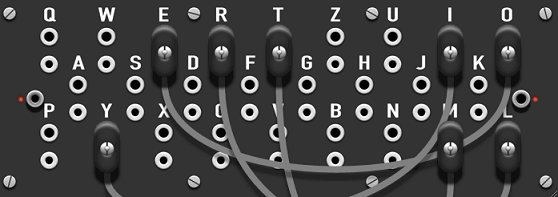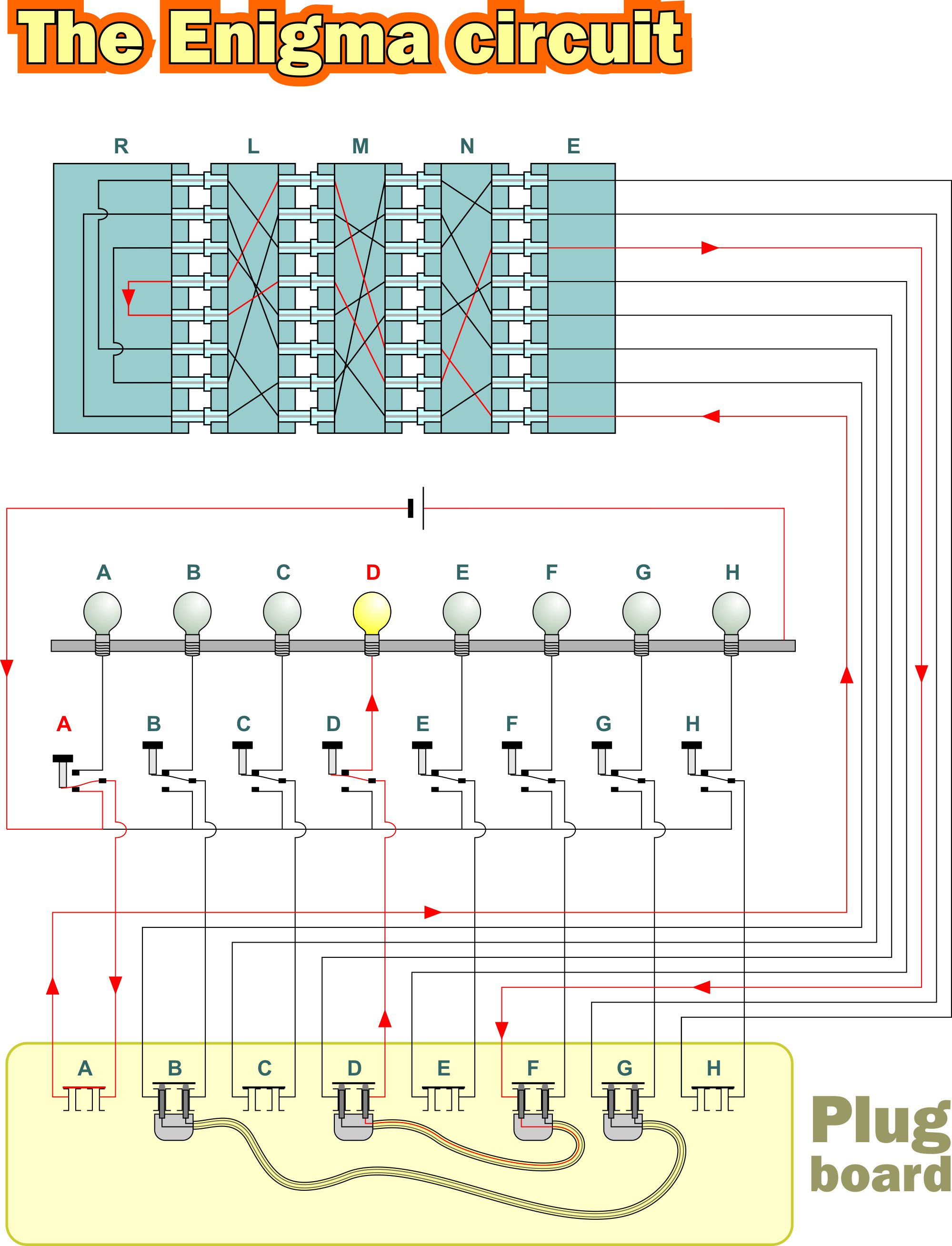

It is this stepping which meant the machine would not act as a standard substitution cipher but would encrypt the same letter differently on separate key presses. When a key was typed, the right-hand “fast” rotor would turn one position and this might cause the next rotor to turn if it was aligned a certain way. By turning the ring on a rotor, the wiring core of the rotor is turned relative to the letter showing in the window of the Enigma machine.

The operator would write this down and continue typing the next letter of the message.Įach rotor had a ring setting ( Ringstellung) that could be adjusted by opening the lid of the machine to access the rotors. After exiting the rotors the current would pass into a reflector which would again transpose the incoming letter and this time reflect the current back through the rotors and back into the plug board where it was switched again with another letter, and finally into a lamp board which would light up the final encrypted letter. Each rotor would perform its own letter substitution. The operator would type a key on the keyboard and an electric current would travel through a plug board (which transposed individual letters) and into a set of rotors which could rotate after each key was pressed. The actual Enigma machine utilised a keyboard, a plug board (the Steckerbrett), a set of rotors ( Walzen) and a reflector ( Umkehrwalze or UKW). There are settings for the device version, reflector, rotors, wheel positions, ring positions and plug board.

The left side of the display allows the encryption and decryption of typed or pasted messages and in effect simulates the machine itself.


 0 kommentar(er)
0 kommentar(er)
